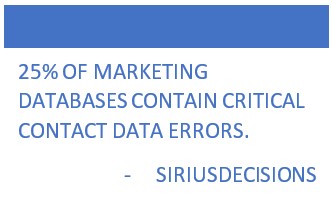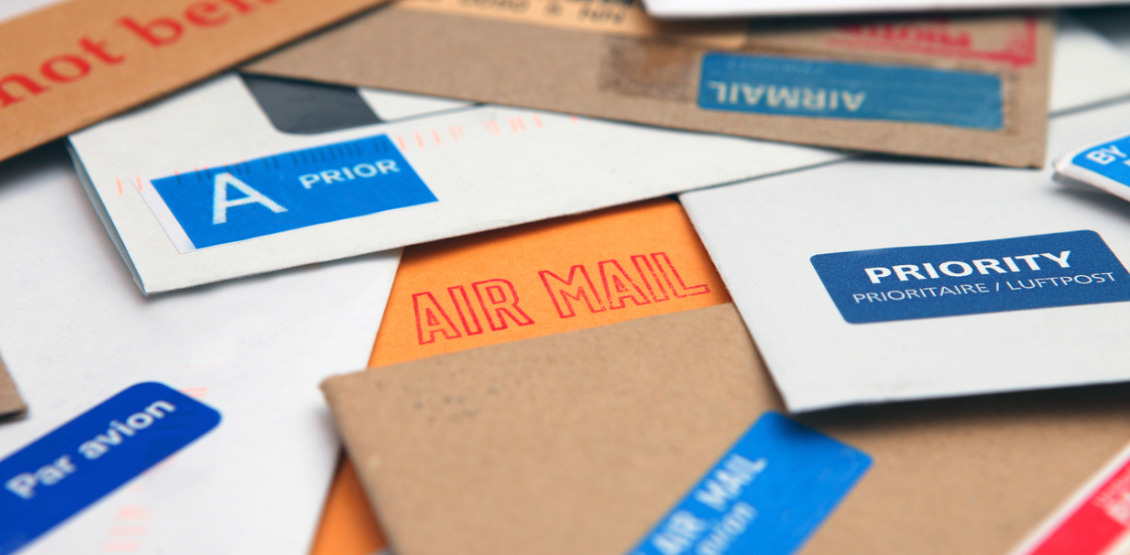The Need for Accurate Addresses
Once upon a time, businesses simply accepted a certain amount of bad contact data as part of the normal cost of doing business. Data maintenance, when performed, was often someone else’s job and generally afforded little budget to administer. This is no longer the case. The relative ease of integrating cost-effective validation and correction solutions far outweighs the real costs and risks of not correcting address and contact data.
Your contact data is like a garden: it requires regular maintenance and things can go bad over time if they aren’t tended to. Moreover, there can be serious costs and consequences if you don’t maintain this data, including:
- Increased postal costs
- Poor marketing and sales performance
- Brand damage from missed deliveries and unwanted marketing
- Less effective target marketing
- Compliance penalties
Privacy and data compliance are top challenges for most organizations around the globe. Businesses can no longer risk running afoul of the growing number of consumer data privacy regulations. Regulations like the European Union’s General Data Protection Regulation (GDPR), and the California Consumer Privacy Act (CCPA), are focused on consumer data privacy, especially in the digital realm, recommend stiff penalties for unwanted marketing solicitation and highlight the need for accurate contact data.
Anatomy of a Contact Record
When discussing contact record accuracy, we are focused on the unique data points that identify a person or business. Specifically, we are looking at:
- Name
- Business
- Address
- Phone
- IP Address
Each of these data points can be individually validated or cross-referenced with one another to determine accuracy. In this article, we are focused on the ‘address’ element of the contact record. If you are interested in learning about validating other elements or the entire record, visit serviceobjects.com
These regulations will likely have an (unintended) positive impact on the direct mail marketing channel as businesses look for lower risk ways to reach their customers and prospects, which further increases the need for address accuracy.
Before diving into ways to make certain addresses are accurate and up-to-date, it is helpful to understand some of the common ways contact data can go bad.
How contact data goes bad
Contact data is a surprisingly perishable and error-prone quantity, with multiple potential sources for mistakes. Some of the biggest causes of bad contact data include:
Data entry error
One of the largest problems with contact data is that it is normally entered by human beings, with the potential to “fat-finger” or intentionally enter bad data. This can come from a number of sources, including leads and customers themselves, call center agents, and manual data entry, particularly when the original content has legibility problems. In each of these cases, data is at risk of being incorrect at the time of collection or initial conversion to a database format.
Multiple touch points
This is often an issue where there are multiple points of entry for lead and contact data, including ecommerce, shipping, accounting and customer service. This situation is often further exacerbated when multiple platforms are involved in contact data capture, such as web forms, social media channels, and internal systems such as marketing automation platforms, CRMs and ERPs.
Piecemeal data capture
A related problem is when you are building a prospect or customer profile over time across multiple interactions. For example, your lead or sales funnel might start with capturing a name and email address in response to a marketing promotion. Then a follow-up contact may capture a phone number, and a subsequent request for literature may ultimately capture a mailing address. Making sure that all this data is accurately captured, validated and written back to a single record is key.
Change of address
This is a major issue in contact data integrity, because when people change addresses, few if any, would think to inform marketing departments. And people are constantly on the move: over 38 million Americans moved in 2018, and file over 120,000 change of addresses with the USPS every day.
New or renamed address
Sometimes it is not only people changing addresses, but the addresses themselves. There are over 4,000 new addresses added every day to the USPS database, as streets get renamed, new developments are built, empty lots are converted to deliverable locations and more.
Physical versus mailing address
When is an address not really an address? In the very common case that it refers to a physical location that USPS does not deliver to but is serviced by other carriers such as FedEx and UPS. Common examples of this include rural route and general delivery addresses—for example, for the address:
400 Farm Street RR#7 Anytown, AL 12345
USPS will use “RR#7” (Rural Route 7) as the general delivery location, while other services may have a physical location for the recipient’s home at “400 Farm Street”.
An important side note to this is that while people often use popular tools such as Google Maps to verify locations and addresses, these tools weren’t designed for this purpose. As we explore in a recent article, you need the power of a dedicated address validation service to help ensure that you have an accurate, deliverable address.
Data hygiene accountability
Finally, one of the biggest issues in contact data quality is organizational: this data often has multiple stakeholders involving “silos” of responsibility, such as marketing, sales, customer service, data entry, and more. This means that too often data hygiene is everyone’s responsibility, and therefore no one’s responsibility. As we discuss later in this whitepaper, it is important to have assigned responsibility for data governance within your organization.
Want to know more?
Our data quality specialists are always happy to share ways that address quality can improve your business, feel free to contact us.
If you are interested in testing our US, Canada and International Address Validation products, you can sign up for a free trial key with 500 free transactions.
This article is an excerpt from our free whitepaper, The ROI of Address Validation, which we invite you to download.













